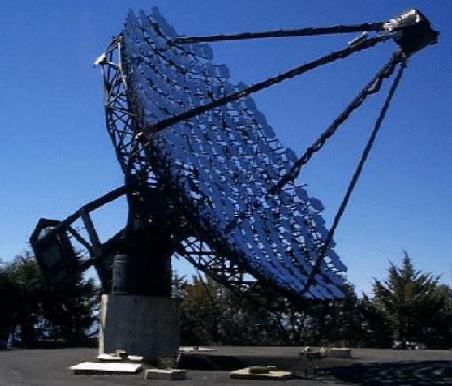MAGIC
Skip navigation and go to main content
- Home
- General Information
- Science with MAGIC
- MAGIC members
- Maintenance

Cherenkov telescopes
Imaging Atmospheric Cherenkov Telescopes (IACTs) are ground-based detectors for high-energy gamma rays. The name IACT contains most of the characteristics of this type of instrument:
- The detectors have a mirror to collect light and focus it on a camera, so they resemble optical telescopes, at least superficially;
- These telescopes detect light produced by the Cherenkov effect in the blue to UV range of the light spectrum, a radiation emitted by relativistic particles that exceed the speed of light in the atmosphere;
- IACTs record many Cherenkov photons for a single incident gamma ray at the top of the atmosphere. They are detected by the camera as a characteristic image that allows the identification of the incident particle as a gamma ray, and to specify its direction and energy.
The MAGIC Telescopes are a continuation of work that started at the same site before 1987 with the HEGRA detector. Both experiments target the observation of high-energetic photons from sources within and outside our galaxy. The detection of these very-high-energy (VHE) gamma rays is only possible through the indirect observation via Cherenkov light. The atmosphere has only narrow windows for wavelengths to pass, it is transparent essentially only for visible and infrared light, and for long radio waves. But not for gamma rays, as shown in the diagram below for the entire electromagnetic spectrum.

- One telescope of the Whipple Observatory
